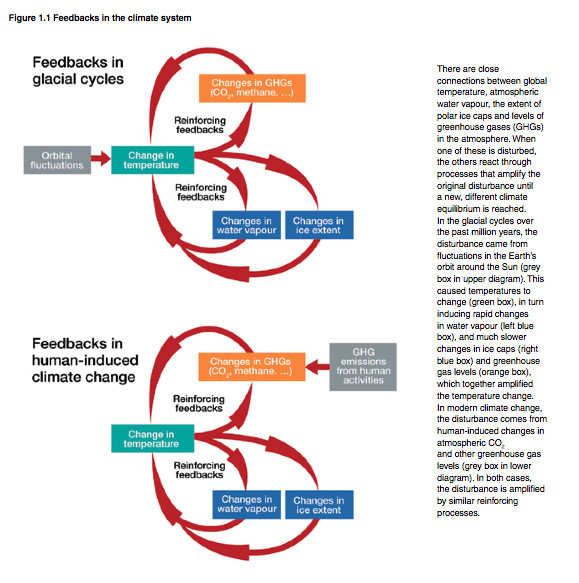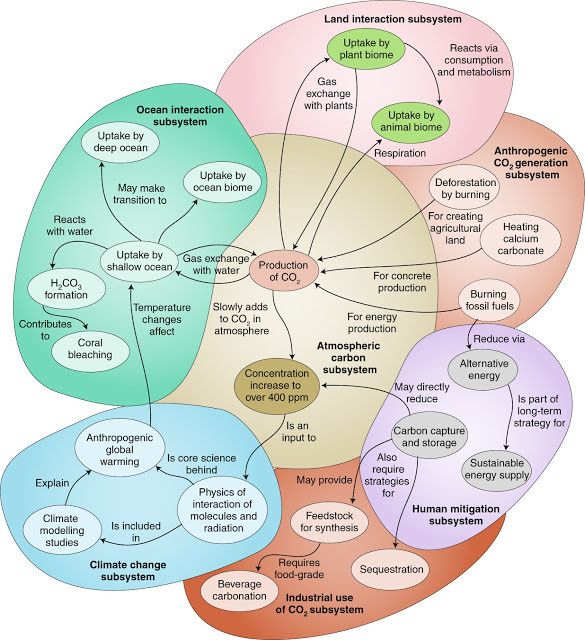
Systems Thinking, Lumpers and Splitters, Systems Education
July 11, 2019
One of Eli's favorite figures comes from the Australian Academy of Sciences and neatly captures the way in which greenhouse gases can be both an initiator and a feedback to global climate
The emphasis is on how the systems are linked, us splitters can fill you in on what is in the lumps, oh if you have a few days, but you really almost don't need to know to understand how each part works to have a great understanding of how they work together.
Part of the problem many scientists have explaining such to the average family member and students is that physical science and engineering STEM folks tend to be splitters, aka reductionists, tear something down to the bare bones to understand how it works.
With a subject that links many areas and ideas together, it simply takes too long to bring folks up to speed on enough parts of the problem that they (to use a 60s word, ask grandpa) can grok the thing.
Peter Mahaffy and colleagues at the King's Center for Visualization in Science are lumpers, establish the connections to teach about the entirety, then learn about the individual parts. They have a chemistry centered article in Nature Sustainability on Systems thinking for education about the molecular basis of sustainability
The primary activities of chemistry involve analysing, synthesizing and transforming matter, yet insufficient attention has been paid to the implications of those activities for human and environmental well-being. Since a core element of addressing sustain-ability challenges requires attention to the material basis of society, a new paradigm for the practice of chemistry is needed. Chemistry education, especially gateway post-secondary general chemistry courses, should be guided by an understanding of the molecular basis of sustainability. A Systems Thinking in Chemistry Education framework illustrates one way to integrate knowledge about the molecular world with the sustainability of Earth and societal systemsEli, a splitter to the bone, nonetheless sees great advantages of this approach, not only for climate change but for other issues which impact on the world in general. There are lots of great points and images in this paper. They have a great map that brings together the systems involved in the carbon cycle



